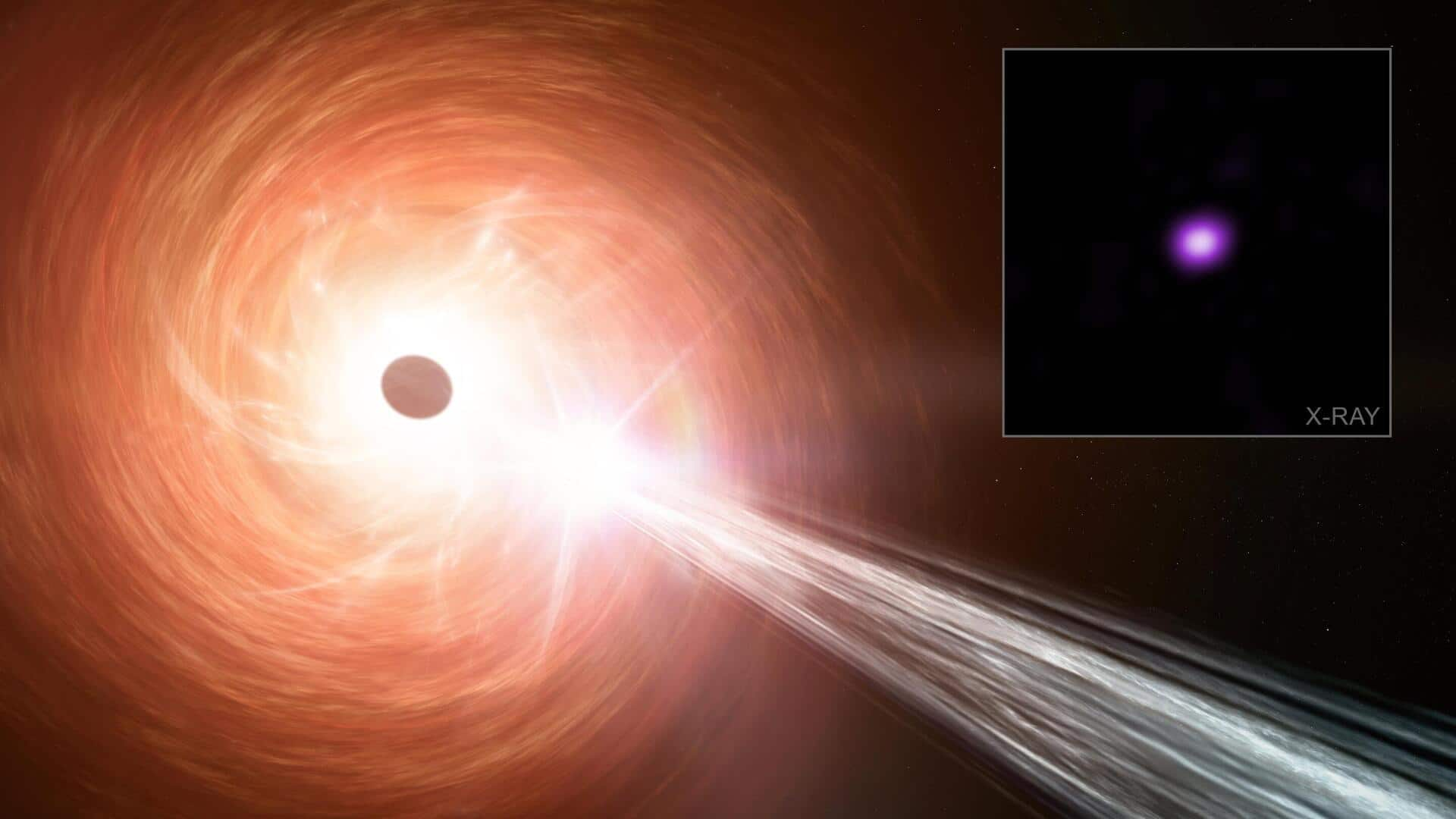
This might be one of the fastest-growing black holes ever
What's the story
A team of astronomers has discovered a black hole growing at one of the fastest rates ever recorded, according to NASA's Chandra X-ray Observatory. The black hole, which is about a billion times the mass of our Sun, is located some 12.8 billion light-years away from Earth. This means we are observing it just 920 million years after the universe's birth. It emits more X-rays than any other black hole observed in this early cosmic period.
Quasar phenomenon
Black hole powers a quasar
The black hole in question is powering a quasar, an incredibly bright object that can outshine entire galaxies. This brightness comes from huge amounts of matter swirling around and falling into the black hole. The team first discovered this unique quasar, RACS J0320-35, two years ago but only recently confirmed its unusual growth rate with data from Chandra in 2023.
Growth anomaly
Exceeding the Eddington limit
The X-ray data from Chandra suggests that this black hole is growing at a rate exceeding the usual limit for such objects. "It was a bit shocking to see this black hole growing by leaps and bounds," said Luca Ighina, who led the study at Harvard & Smithsonian's Center for Astrophysics. The discovery has been published in The Astrophysical Journal Letters.
Dynamics
What is Eddington limit?
When matter falls onto a black hole, it heats up and emits intense radiation across a wide range of wavelengths, including X-rays and visible light. This radiation creates pressure on the infalling material. If the inflow rate exceeds a certain threshold, called the Eddington limit, radiation pressure counters gravity from the black hole, preventing further rapid inward fall of matter.
Estimation
Black holes born with more than 10,000 solar masses
Astronomers believe that black holes growing slower than the Eddington limit must be born with masses of around 10,000 solar masses or more. This allows them to reach billion solar masses within a billion years after the Big Bang, as seen in RACS J0320-35. However, if this black hole is growing at a high rate, at 2.4 times the Eddington limit, its black hole could have started out in a more conventional way, with mass less than 100 solar masses.
Measurement
How did researchers estimate growth rate?
The researchers estimated this black hole's growth rate (between 300 and 3,000 solar masses per year) by comparing theoretical models with the X-ray spectrum from Chandra. They found that the Chandra spectrum closely matched their expectations for a black hole growing faster than the Eddington limit. Optical and infrared light data also supports this interpretation, suggesting that this black hole is gaining mass faster than allowed by the Eddington limit.